In Boise, Idaho on May 17 I caught a Camponotus Modoc Queen and another much smaller queen which I suspect is also a Camponotus Species.
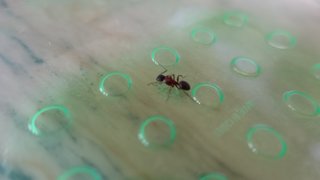
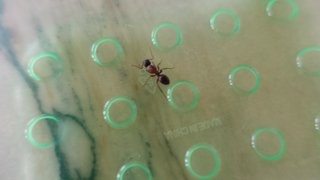 Pictures, Red thorax and Black Head and Abdomen.
Pictures, Red thorax and Black Head and Abdomen.
Edited by antboyidaho, May 19 2021 - 12:55 PM.
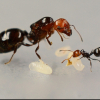
In Boise, Idaho on May 17 I caught a Camponotus Modoc Queen and another much smaller queen which I suspect is also a Camponotus Species.

 Pictures, Red thorax and Black Head and Abdomen.
Pictures, Red thorax and Black Head and Abdomen.
Edited by antboyidaho, May 19 2021 - 12:55 PM.
Colonies:
One Formica Podzolica queen in a test tube setup.
also, C. pennsylvanicus is not present in Idaho. Might want to double-check that ID.
I like leafcutter ants. Watch The Ultimate Guide to Fungus Growing Ants:
https://youtu.be/VBH...4GkxujxMETFPt8U
This video took like over 100 hours of work, you should for sure watch it.
Camponotus, but not a queen. Looks like a media worker.
The ant had wings and shed them so it is either a male of a queen and it does not seem like a male
Colonies:
One Formica Podzolica queen in a test tube setup.
Are you able to get any higher resolution images? with the ones provided it definitely looks like a Camponotus worker
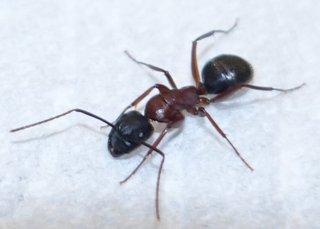
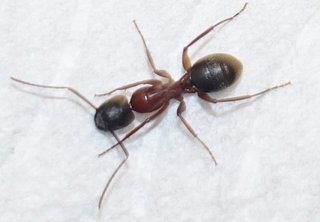
Colonies:
One Formica Podzolica queen in a test tube setup.
Hi there! I went on a 6 month or so hiatus, in part due, and in part cause of the death of my colonies.
However, I went back to the Sierras, and restarted my collection, which is now as follows:
Aphaenogaster uinta, Camponotus vicinus, Camponotus modoc, Formica cf. aserva, Formica cf. micropthalma, Formica cf. manni, Formica subpolita, Formica cf. subaenescens, Lasius americanus, Manica invidia, Pogonomyrmex salinus, Pogonomyrmex sp. 1, Solenopsis validiuscula, & Solenopsis sp. 3 (new Sierra variant).
I second that, Camponotus (Camponotus) cf. vicinus or a related species.
Currently Keeping:
Camponotus chromaiodes, Camponotus nearcticus, Stigmatomma pallipes, Strumigenys brevisetosa, Strumigenys clypeata, Strumigenys louisianae, Strumigenys membranifera, Strumigenys reflexa, Strumigenys rostrata
also, C. pennsylvanicus is not present in Idaho. Might want to double-check that ID.
Perhaps it was C. modoc? Also I double on what Ferox says, either vicinus or a related species. Also there's no way that had wings, the thorax curves down, so there's no room for wing muscles, not to mention the fact that the gaster is circular and skinny.
シグナチャーです。예.
Camponotus, but not a queen. Looks like a media worker.
The ant had wings and shed them so it is either a male of a queen and it does not seem like a male
The pictures provided clearly show a worker, which cannot have wings in the first place.
Ok I guess that I should tell the whole story from the beginning. So I caught two of the ant species with the black head and abdomen and red thorax. Both the queens I caught had wings. I let one of them go and kept one of them. The next morning I found the ant crawling along the ground with no wings. One of the ants kept their wings and one did not. Here is the picture of the ant winged ant:
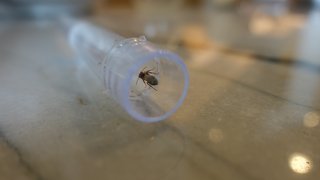
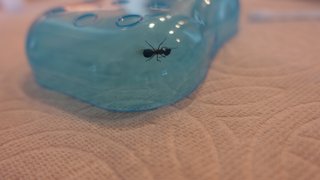
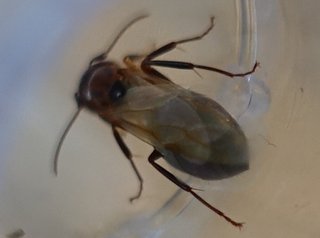
So if this ant is not a queen why does it have wings?
So to sum up I caught two queens with a day between them. One had wings the other did not.
Edited by antboyidaho, May 19 2021 - 6:04 AM.
Colonies:
One Formica Podzolica queen in a test tube setup.
I don't think it was the same ant considering the build of the one in the morning that's supposedly the one you let go is exactly like a worker, not a queen.
シグナチャーです。예.
I don't think it was the same ant considering the build of the one in the morning that's supposedly the one you let go is exactly like a worker, not a queen.
So you think the one without wings is not a queen but the one with wings is?
Colonies:
One Formica Podzolica queen in a test tube setup.
I don't think it was the same ant considering the build of the one in the morning that's supposedly the one you let go is exactly like a worker, not a queen.
So you think the one without wings is not a queen but the one with wings is?
Exactly. It was just really confusing since you only posted pictures of the one that is a worker, not the queen until now.
Edited by Kaelwizard, May 19 2021 - 6:22 AM.
Ok, sorry about that. I just really did not want to disturb the ants and stress them out.
So you think that it is a Camponotus Vicinus Queen? It is super small at only about one centimeter long.
Colonies:
One Formica Podzolica queen in a test tube setup.
Ok, sorry about that. I just really did not want to disturb the ants and stress them out.
So you think that it is a Camponotus Vicinus Queen? It is super small at only about one centimeter long.
1 cm is too small to be Camponotus, but it is clearly Camponotus. I would double check your measurements.
Ok, sorry about that. I just really did not want to disturb the ants and stress them out.
So you think that it is a Camponotus Vicinus Queen? It is super small at only about one centimeter long.
1 cm is too small to be Camponotus, but it is clearly Camponotus. I would double check your measurements.
Are you forgetting about Myrmentoma?
My Main Journal | My Neivamyrmex Journal | My Ant Adoption | My YouTube
Join the TennesseeAnts Discord Server! https://discord.gg/JbKwPgs
Ok, sorry about that. I just really did not want to disturb the ants and stress them out.
So you think that it is a Camponotus Vicinus Queen? It is super small at only about one centimeter long.
1 cm is too small to be Camponotus, but it is clearly Camponotus. I would double check your measurements.
I double checked and for sure it is 1 cm from head to abdomen.
Colonies:
One Formica Podzolica queen in a test tube setup.
Oh crap! I completely forgot!Are you forgetting about Myrmentoma?
1 cm is too small to be Camponotus, but it is clearly Camponotus. I would double check your measurements.
Ok, sorry about that. I just really did not want to disturb the ants and stress them out.
So you think that it is a Camponotus Vicinus Queen? It is super small at only about one centimeter long.
If it is Myrmentoma what type specifically?
Edited by antboyidaho, May 19 2021 - 12:51 PM.
Colonies:
One Formica Podzolica queen in a test tube setup.
0 members, 0 guests, 0 anonymous users